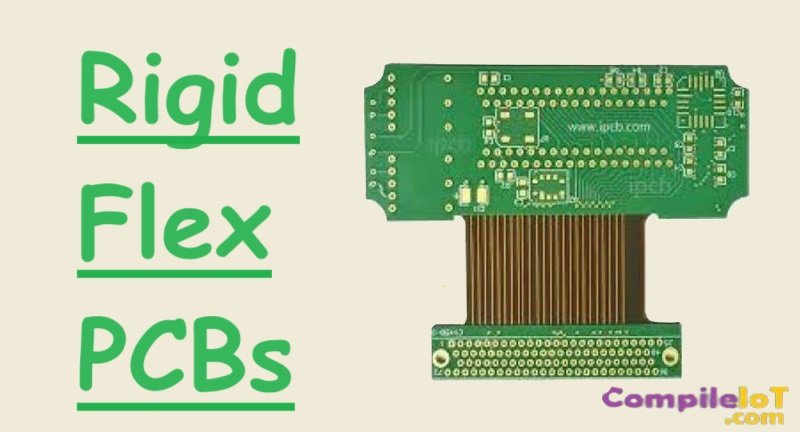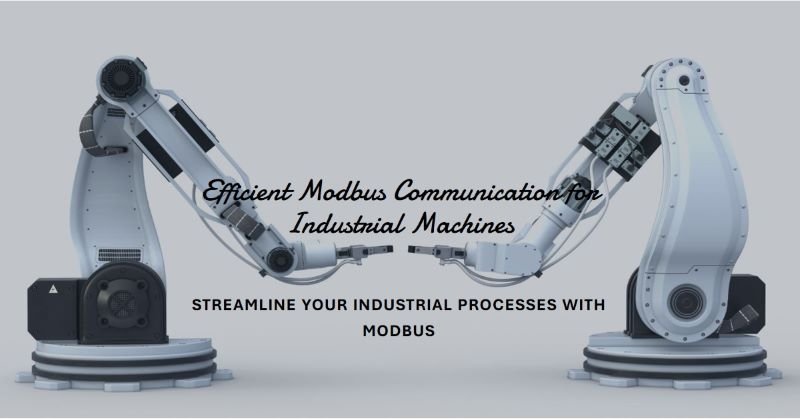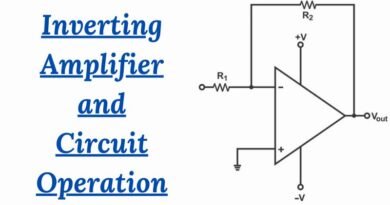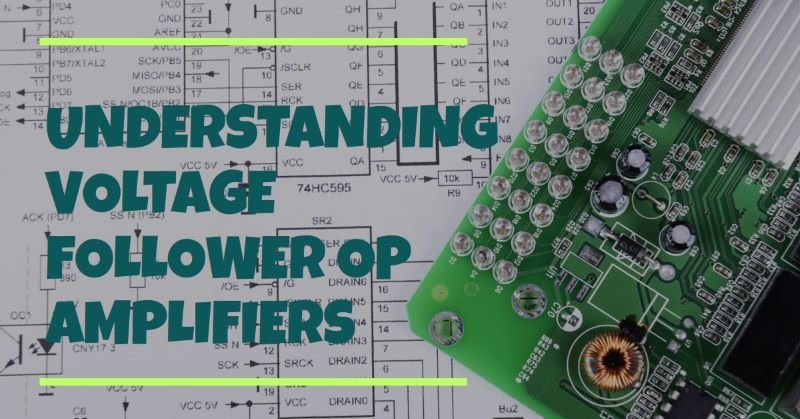What is Electronic Assembly? Working with EMS PCBA Manufacturers
Electronic assembly is the process of integrating electronic components onto printed circuit boards (PCBs) to create functional electronic devices. This crucial step in the electronics manufacturing process ensures that various components such as resistors, capacitors, integrated circuits, and connectors are properly connected and interact seamlessly. The importance of electronic assembly cannot be overstated, as it directly impacts the functionality, reliability, and performance of electronic products used in countless applications, from consumer electronics to industrial machinery.
Introduction to EMS (Electronics Manufacturing Services) and PCBA (Printed Circuit Board Assembly)
Electronics Manufacturing Services (EMS) refer to companies that provide comprehensive end-to-end manufacturing solutions, including design, assembly, testing, and distribution of electronic components and products. EMS providers play a vital role in the electronics industry by offering specialized expertise and resources that enable companies to bring their products to market efficiently and cost-effectively.
Printed Circuit Board Assembly (PCBA) is a core service offered by EMS providers. PCBA involves the process of soldering electronic components onto PCBs to create fully functional electronic assemblies. By partnering with EMS providers for PCBA, companies can leverage advanced manufacturing technologies, skilled labor, and stringent quality control measures to ensure the production of high-quality electronic products.
Understanding Electronic Assembly
Definition of Electronic Assembly
Electronic assembly is the process of creating electronic circuits by placing electronic components on a PCB and connecting them via conductive pathways. This process transforms individual components into a cohesive, functional electronic system that can perform a wide range of tasks.
Key Components Involved in Electronic Assembly
- PCBs (Printed Circuit Boards): The foundation of electronic assemblies, providing the physical structure and electrical connectivity for components.
- Components: Various electronic parts such as resistors, capacitors, diodes, transistors, and integrated circuits that perform specific functions within the circuit.
- Soldering Materials: Substances like solder paste and flux used to secure components to the PCB and ensure reliable electrical connections.
Different Types of Electronic Assemblies
- Through-Hole Technology (THT): Components with leads are inserted into holes on the PCB and soldered on the opposite side. THT is known for its durability and mechanical strength.
- Surface-Mount Technology (SMT): Components are mounted directly onto the surface of the PCB using solder paste. SMT allows for higher component density and smaller, more compact assemblies.
- Mixed Technology: Combines both THT and SMT components on the same PCB to leverage the advantages of each method.
The Role of EMS in Electronic Assembly
Explanation of EMS and Its Services
EMS providers offer a range of services that encompass the entire electronics manufacturing process, from initial design and prototyping to full-scale production and post-production support. These services include:
- Design and Engineering: Assisting with the design and development of electronic products to ensure manufacturability and performance.
- Prototyping: Creating early versions of products for testing and validation.
- PCBA: Assembling electronic components onto PCBs.
- Testing and Quality Control: Ensuring that products meet specifications and standards.
- Supply Chain Management: Managing the procurement of components and materials.
- Logistics and Distribution: Handling the shipping and distribution of finished products.
Importance of EMS in the Electronics Manufacturing Process
EMS providers are crucial to the electronics manufacturing process as they offer specialized expertise, advanced technologies, and scalable resources. By partnering with EMS providers, companies can focus on their core competencies, such as product development and marketing, while leaving the complexities of manufacturing to experts.
Benefits of Working with EMS Providers
- Cost-Effectiveness: EMS providers offer economies of scale and efficient manufacturing processes that reduce production costs.
- Access to Advanced Technology: EMS providers invest in the latest manufacturing equipment and technologies, ensuring high-quality production.
- Scalability: EMS providers can quickly scale production up or down based on demand, providing flexibility for companies.
- Faster Time-to-Market: Streamlined processes and expertise enable faster product development and delivery.
Steps in the PCBA Process
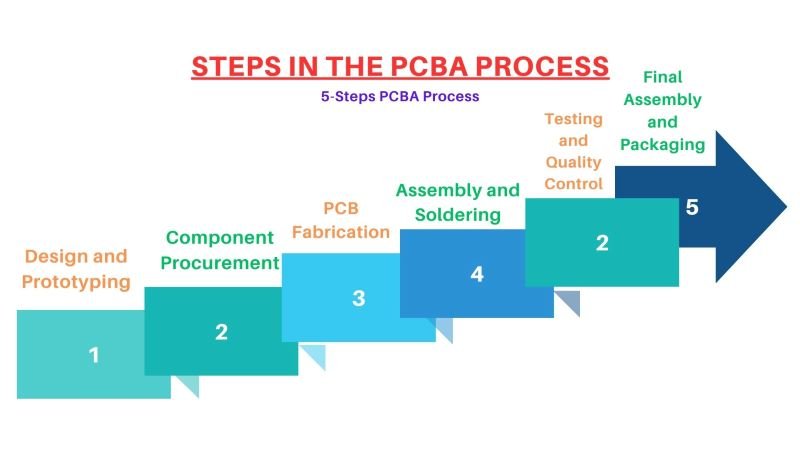
Design and Prototyping
The initial step involves designing the electronic product and creating prototypes. Engineers develop schematics, design PCBs, and produce prototype assemblies to test and validate the design. This phase is crucial for identifying and resolving any design issues before moving to full-scale production.
Component Procurement
Once the design is finalized, the necessary components are sourced from suppliers. EMS providers leverage their supply chain networks to procure high-quality components at competitive prices, ensuring timely availability for production.
PCB Fabrication
The PCB fabrication process involves creating the physical board based on the design specifications. This includes etching copper traces, drilling holes, and applying solder masks and silkscreen layers to produce the finished PCB.
Assembly and Soldering
In this step, electronic components are placed onto the PCB using either through-hole or surface-mount technology. Soldering materials are applied to secure the components and establish electrical connections. Precision and accuracy are critical during this phase to ensure reliable performance.
Testing and Quality Control
Comprehensive testing and quality control measures are implemented to verify the functionality and reliability of the assembled PCBs. This includes in-circuit testing (ICT), functional testing, and inspection techniques such as automated optical inspection (AOI) and X-ray inspection.
Final Assembly and Packaging
After testing, the PCBs are assembled into final products, which may involve additional components, enclosures, and connectors. The finished products are then packaged for shipping and distribution to customers. Quality assurance checks are performed throughout this process to ensure the highest standards are maintained.
Choosing the Right EMS PCBA Manufacturer
Key Factors to Consider
- Experience:
- Look for manufacturers with a proven track record in the industry.
- Evaluate their experience with similar projects and their ability to handle complex assemblies.
- Certifications:
- Ensure the manufacturer holds relevant certifications, such as ISO 9001 for quality management and ISO 13485 for medical devices.
- Certifications indicate adherence to industry standards and best practices.
- Technology:
- Assess the technology and equipment used by the manufacturer.
- Advanced manufacturing technologies and state-of-the-art equipment can enhance production quality and efficiency.
- Capacity:
- Consider the manufacturer’s production capacity to ensure they can meet your volume requirements.
- Evaluate their scalability to accommodate future growth and demand fluctuations.
Evaluating the Manufacturer’s Quality Assurance and Testing Capabilities
- Quality Assurance:
- Investigate the manufacturer’s quality assurance processes, including their adherence to quality standards and continuous improvement initiatives.
- Look for a robust quality management system that ensures consistent product quality.
- Testing Capabilities:
- Assess the range and sophistication of testing methods employed, such as in-circuit testing (ICT), functional testing, automated optical inspection (AOI), and X-ray inspection.
- Ensure the manufacturer has a thorough and systematic approach to detecting and resolving defects.
Importance of Communication and Customer Support
- Communication:
- Effective communication is crucial for successful collaboration. Ensure the manufacturer provides clear and regular updates on project progress.
- Look for manufacturers who are responsive and proactive in addressing concerns and questions.
- Customer Support:
- Strong customer support is vital for resolving issues promptly and ensuring a smooth manufacturing process.
- Evaluate the manufacturer’s commitment to customer service and their ability to provide technical support and guidance.
Benefits of Partnering with an EMS PCBA Manufacturer
Cost-Effectiveness
- Economies of Scale:
- EMS providers often achieve economies of scale, reducing production costs through bulk purchasing and efficient manufacturing processes.
- Resource Optimization:
- Outsourcing manufacturing allows companies to optimize their resources, focusing on core competencies while leveraging the expertise of the EMS provider.
Access to Advanced Technology and Expertise
- Technological Advancements:
- EMS providers invest in the latest manufacturing technologies, ensuring high-quality and innovative production.
- Specialized Expertise:
- Manufacturers offer specialized knowledge and skills in electronic assembly, enhancing product quality and performance.
Scalability and Flexibility
- Adaptability:
- EMS providers offer scalability to meet varying production demands, from small batches to large-scale manufacturing.
- Flexibility:
- The ability to quickly adapt to design changes and market demands provides a significant competitive advantage.
Time-Saving and Faster Time-to-Market
- Streamlined Processes:
- Efficient manufacturing processes and expertise enable faster product development and production cycles.
- Reduced Lead Times:
- Shorter lead times accelerate time-to-market, allowing companies to respond quickly to market opportunities.
Challenges in Electronic Assembly and How EMS Providers Address Them
Common Challenges
- Supply Chain Issues:
- Delays in component procurement and supply chain disruptions can impact production schedules.
- Quality Control:
- Ensuring consistent product quality across large production runs can be challenging.
- Design Changes:
- Implementing design changes efficiently without affecting production timelines requires flexibility and expertise.
Solutions Provided by EMS Manufacturers
- Supply Chain Management:
- EMS providers have established supply chain networks and can manage component procurement effectively, minimizing delays.
- Rigorous Quality Control:
- Advanced testing and quality assurance processes ensure high standards and consistent product quality.
- Flexibility in Design Changes:
- EMS providers offer agile manufacturing solutions that accommodate design changes swiftly, maintaining production efficiency.
Conclusion
Electronic assembly is a critical process in the creation of reliable and high-performing electronic products. EMS providers play a pivotal role in this process, offering specialized expertise, advanced technologies, and comprehensive manufacturing solutions. Partnering with the right EMS PCBA manufacturer ensures cost-effective production, high quality, and timely delivery of electronic products.
Final Thoughts on Selecting and Working with an EMS PCBA Manufacturer
Selecting the right EMS PCBA manufacturer involves careful consideration of factors such as experience, certifications, technology, and capacity. Evaluating their quality assurance processes, testing capabilities, and customer support is crucial for a successful partnership. By leveraging the benefits of EMS providers, companies can navigate the challenges of electronic assembly, achieve scalability and flexibility, and bring their products to market faster. Ultimately, a strong partnership with an EMS provider is key to producing innovative and reliable electronic products.

